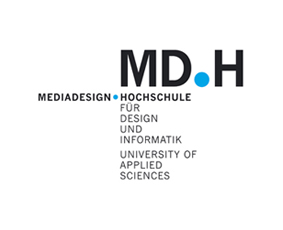This is the second post in a ten-part series about my ongoing workshop “Creating Consistent SF-Worlds” for the Game Design department at the Mediadesign Hochschule in Düsseldorf, Germany.
Part I | Part II | Part III | Part IV | Part V | Part VI
This post will be much briefer than the first one, as we organized into three teams for practice runs in world-building—consuming some large sheets of paper, colored pencils, and considerable amounts of brain power in the process.
Each team built a star system with a planet that allowed for, or at least wouldn’t strongly preclude, the development of indigenous life forms. One system had a red dwarf at its center, with a habitable planet in a much closer orbit than our own orbit around the sun. The second system had a blue B-type star at its center, with a habitable planet in an orbit much farther away than our own around the sun. The third system, finally, had a G-type star like our own with a planet that was tidally locked, i.e., one hemisphere always facing toward the sun, the other always facing away, and a highly interesting terminator zone in between.
Rotational speed, axial tilt, mass, moons, and many more parameters were sketched. Based on these parameters, we modeled likely—or at least possible—characteristics for tectonic behavior, geographical and environmental features, and thermal structures; the latter became especially interesting for the tidally locked planet. Each case came with its own puzzling questions that had to be solved. For example, what could prevent a planet as far out as the one around the blue star to scoop up too much stuff while it still formed, and become a gas giant like Jupiter or Saturn instead? Or, how would the close proximity to its sun in the case of the red dwarf system affect the planet’s orbital characteristics? What kind of water cycle, if any, would develop on the tidally locked planet?
All this took us quite a while, so we had to put off creating story ideas for our environments. We’ll pick up on it when we proceed to designing alien life forms in a later part of the workshop.
If you have something valuable to add or some interesting point to discuss, I’ll be looking forward to meeting you at Mastodon!


I am Bhim Prasad Sharma from Nepal. My son has passed the higher secondary level and is very much interested to study the graphic design and informatic techonology. I get few information that your institute is appropriate for that. Could you please be kind to response me how I can access in your university to admit him.
Best regards,
Bhim Prasad Sharma
Please visit http://www.mediadesign.de, select the bachelor’s or master’s degree program you’re interested in from the blue box to the left below the video, and check its objectives and eligibility & admission requirements.
While I’m writing these blogposts in English for a broader audience, please be advised that the courses at the Mediadesign University are generally held in German language.